La Piedad, Michoacán 作者: 来源: 发布时间:2021-11-18
1.Population and Area
Pop: 249,512 (metro)
Area: 271.59 km2 (munip.)
Elev: 1,767 masl
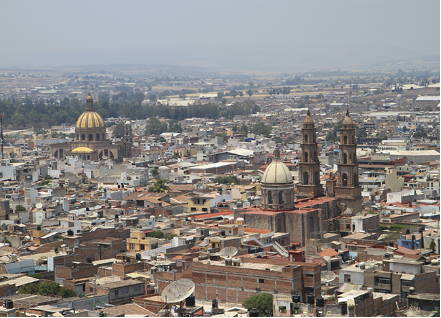
2. Natural geography
Nature and weather
Hydrography
The water sources come from the Lerma river; streams: Domingo Prieto, Prieto and Canapro; cold water springs: the Algodonal and the Capricho, as well as the Aviña, Paredones and Ingeniero Antonio Rodríguez dams.
Flora and fauna
La Piedad flora consists of nopal, cardonal, pasture and various bushes. The fauna is made up of hare, skunk, weasel, squirrel, coyote, gopher, thrush, torcaz (pigeon), catfish and carp.
Köppen Classification: Humid Subtropical Climate
This climate is characterized by relatively high temperatures and evenly distributed precipitation throughout the year. This climate type is found on the eastern sides of the continents between 20° and 35° N and S latitude. In summer, these regions are largely under the influence of moist, maritime airflow from the western side of the subtropical anticyclonic cells over low-latitude ocean waters. Temperatures are high and can lead to warm, oppressive nights. Summers are usually somewhat wetter than winters, with much of the rainfall coming from convectional thunderstorm activity; tropical cyclones also enhance warm-season rainfall in some regions. The coldest month is usually quite mild, although frosts are not uncommon, and winter precipitation is derived primarily from frontal cyclones along the polar front.
The Köppen Climate Classification subtype for this climate is "Cfa". (Humid Subtropical Climate).
The average temperature for the year in La Piedad de Cabadas is 67.1°F (19.5°C). The warmest month, on average, is May with an average temperature of 75.7°F (24.3°C). The coolest month on average is January, with an average temperature of 58.1°F (14.5°C).
The highest recorded temperature in La Piedad de Cabadas is 102.2°F (39°C), which was recorded in May. The lowest recorded temperature in La Piedad de Cabadas is 26.6°F (-3°C), which was recorded in January.
The average amount of precipitation for the year in La Piedad de Cabadas is 29.4" (746.8 mm). The month with the most precipitation on average is July with 7.8" (198.1 mm) of precipitation. The month with the least precipitation on average is March with an average of 0.2" (5.1 mm). In terms of liquid precipitation, there are an average of 69.6 days of rain, with the most rain occurring in July with 16.7 days of rain, and the least rain occurring in March with 0.9 days of rain.
http://www.weatherbase.com/weather/weather-summary.php3?s=916065&cityname=La+Piedad+de+Cabadas%2C+Michoacan%2C+Mexico&units=
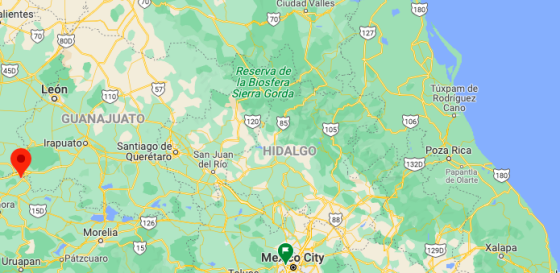
Getting there and around
Get there
By plane – The quickest way to get from Mexico City to La Piedad is to fly to Leon/Guanajuato airport and and drive which costs $1700 - $3500 and takes 4h 5m. The quickest flight from Mexico City Airport to Leon/Guanajuato Airport is the direct flight which takes 1h.
By car – Travelling from Guadalajara on Mexico Federal Highway 15, take Mexico Federal Highway 90 towards La Piedad/Irapuato. You will show up in the western part of the city.
The cheapest way to get from Mexico City to La Piedad is to drive which costs $700 - $1100 and takes 4h 32m. The distance between Mexico City and La Piedad is 320 km. The road distance is 414.4 km.
By bus – La Piedad contains a bus terminal that is served by both private buses and public buses.
There are services departing from Izazaga and arriving at La Piedad via Mexico City North and Guadalajara. The journey, including transfers, takes approximately 10h 16m. Mexico City to La Piedad bus services, operated by Omnibus de Mexico, depart from Mexico City North station.
Riseshare – Check out Blabla Car's carpooling service for rideshare options between Mexico City and Salamanca. A great option if you don't have a driver's license or want to avoid public transport.
Car Rental – To explore Mexico’s provincial towns and cities—including its beach locations and the scenery and attractions near them— consider renting a car for your visit. Having your own car will give you more flexibility than using public transport options and, in some cases, offer you access to places which are otherwise difficult to visit without the use of a car.
COVID19 – International entry into Mexico from United States
Allowed for: All visitors arriving by air. Mexico land borders are closed to non-essential travel
Restricted for: There are no current restrictions.
https://www.rome2rio.com/s/Mexico-City/La-Piedad
https://wikitravel.org/en/La_Piedad
Get around
Local Buses – Local buses and mini-buses (combis or micros) are available locally for a fraction of the cost of a taxi around town. You need to speak Spanish to be able to ask for directions or ask the driver to tell you where to get off.
Taxis – Taxis in most of Mexico’s towns and cities are not metered, so agree your price before you get in. Taxi travel is very affordable in Mexico, in comparison to the USA, Canada and Europe, and so provides a viable means of public transportation in Mexico. Your hotel can arrange taxis for you; some post their rates on a board in the lobby; taxi hotel rates are usually higher than cabs you hail off the street. If you speak Spanish, you will have a distinct advantage and be able to negotiate a price with the driver.
Uber is expanding rapidly across Mexico and now offers services in cities across the country, including: Mexico City, Toluca, Cuernavaca, Puebla, Querétaro, León, Aguascalientes, San Luis Potosí, Guadalajara, Monterrey, Hermosillo, Tijuana, Mexicali, and Mérida. Uber has been adding Mexican cities to its network every year, check for availability when you arrive at your destination in Mexico.
Cabify and Didi are also developing and currently operate in cities including Mexico City, Toluca, Monterrey, Puebla, Querétaro and Tijuana. Check for availability in the city you are visiting.
These services offer people with smartphones a way to book a cab through a mobile app for a pre-agreed price. Fares are comparable with Sitio type cabs, and sometimes trade at a premium to this when local demand increases.
https://www.mexperience.com/transport/taxi-travel-in-mexico/#51
3. GDP
GDP: 19,879 M MXN (2010, La Piedad-Pénjamo metro area)
https://imco.org.mx/ciudades2010/ciudades/26_Lapiedad.html
4. Industry characteristics
La Piedad is a hub for agricultural products. The town was once known as the center of the Mexican pork industry, and still plays an important part in that industry. However, La Piedad has recently moved its economy towards textiles. Major textil manufacturers include Olmeca, Marval and Manriquez. Surrounding towns are Santa Ana, Yurecuaro, Degollado, Numaran, and Ecuandureo. La Piedad is also the headquarters for veterinary pharmaceuticals company LaPisa and industrial turbine manufacturer Turbomaquinas and Famaq. Also there is an important candy factory named Cabadas and sausage factories like Nu-tres, Delta and Bafar (former Parma). Most companies are family owned and operated. These are Saldaña and García, the latter owns Turbomaquinas S.A. de C.V., FAMAQ, Turboaleaciones S.A. de C.V. and the former owns Grupo Kasto.
There are 569 companies registered in the municipality, which puts La Piedad in the top four cities in the state with the greatest number of companies, after Morelia, Uruapan, and Zamora.
Ferromex Railway and Kansas City Southern de México crosses La Piedad.
Key project: Modernization of the Ecuandureo-La Piedad highway
The President of Mexico, Andrés Manuel López Obrador, announced in a conference that, since last July, the reconstruction and modernization of the Ecuandureo-La Piedad highway section has been underway.
This work is within the package of projects in execution that are carried out between the Federation and the Private Initiative, being promoted by Red de Carreteras de Occidente.
This project is a confirmation of the agreement between businessmen and the government that was signed last year, with an investment amount of 8,991 million pesos.
https://periodicolaredaccion.com/en-marcha-la-modernizacion-de-la-carretera-ecuandureo-la-piedad-amlo
5. Attractions
Cavadas Bridge
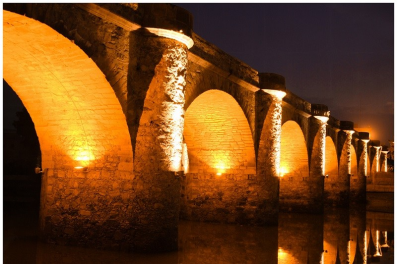
One of the historical monuments that has given identity to La Piedad is the Puente Cavadas, which connects the states of Michoacán and Guanajuato, without a doubt it is considered among the architectural jewels of this city, due to its history.
This work was started in April 1832 by mandate of the then Lord Priest of the Lord of La Piedad Parish, José María Cavadas Dávalos from Zamore, which is why it bears the name of the benefactor. The bridge was built with pink quarry, by artisans from this region, popularly called "stonemasons".
The Cavadas Bridge is a work that consists of ten Roman-type arches and compartments in the form of seats, under its pillars they cross the waters of the Lerma River, currently it is still a pedestrian crossing for the inhabitants of La Piedad and Santa Ana Pacueco.
Despite its beauty, it is known that its construction was not a whim of the time, but a necessity of the population, that despite the proximity between the two demarcations, it was difficult for them to move from Michoacán to Guanajuato.
https://0limites.mx/?p=10748
Plazuelas Archeological Site
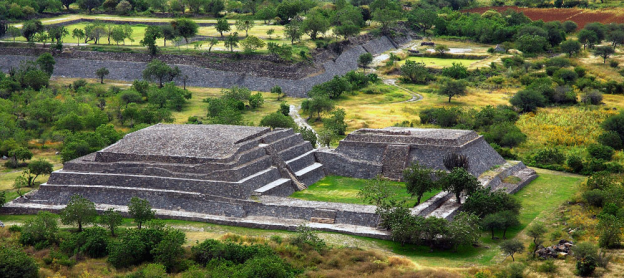
Plazuelas is a prehispanic archaeological site located just north of San Juan el Alto, some 2.7 kilometers (1.57 mi.) north of federal highway 90 (Pénjamo-Guadalajara), and about 11 kilometers (6.8 mi.) west of the city of Pénjamo in the state of Guanajuato, Mexico. The site is open to the public; it is dominated by a large, rectangular plaza with several pyramidal structures and platforms, along with a massive ball court. To the north of the structures is a field of boulders with thousands of glyphs carved into them.
The original settlement was considerably larger, with a large, circular structure called El Cajete marking its eastern extent.
According to INAH, site remains and evidence confirms the influence of many cultures merging on this site, although it is not certainly known who constructed this city, INAH believes the hunter-gatherer Chichimecas inhabited the Bajio region at the end of the postclassical period, and that many other sedentary cultures lived here before, but these cultures are not mentioned nor identified.
Plazuelas (600-900 CE) is located in the same Municipality as the Barajas (archaeological site) (? – 1000 CE) and some 46 kilometers (28.6 mi.) west of Peralta (100 – 900 CE), and share similar settlement mesoamerican classical period, hence it is possible that these three cities shared constructors, inhabitants, religion, governments and traded as part of a common “Bajio Tradition”.
Very little is known about these societies inhabiting the Bajio Region, they are thought to have been members of hunter-gatherer, fishing Chichimec groups, it is now known that these places were trading confluence routes between central Mexico with northern and western Mesoamerica.
https://en.wikipedia.org/wiki/Plazuelas
La Piedad rebozo workshops
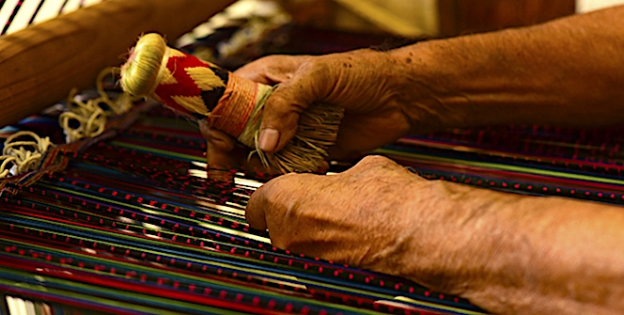
More than half a century of history and tradition are lived under the walls of the Cooperativa Textil Artesanal de La Piedad de Cabadas, located at number 71 Emiliano Zapata street, in the 3-star neighborhood, where the elaboration of the handmade shawl frames the roots from this town to the northwest of Michoacán.
It is the only commercial entity that manufactures this garment from an artisanal process, offering a tourist destination when visiting La Piedad and also maintaining the tradition that in the mid-twentieth century gave identity to this city.
The manufacture of the rebozo became so important that the first soccer team to enter professional football in 1951 was baptized as Reboceros de La Piedad - the name that remained - in honor of the rebozo production.
Ramón Zambrano, is the master rebocero of La Piedad, in his workshop the Rebocería Zambrano, with more than 60 years old you will find the most beautiful rebozos. We recommend that you visit any of the workshops that are dedicated to this beautiful trade and acquire one to keep this tradition alive.
https://infometropoli.com/rebozo-turismo-historia-y-tradicion
https://www.zonaturistica.com/en/things-to-do/michoacan/la-piedad/rebozos-of-la-piedad
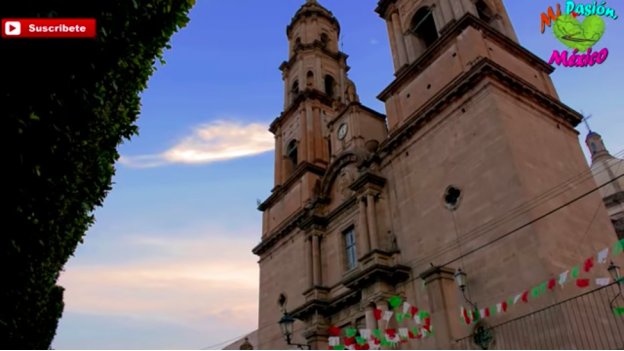
Sean Bienvenidos a la Mítica, Piedad, Michoacán
https://youtu.be/qQ1h8oLHHTo
6. History
According to archaeological pieces such as ceramic fragments, carved obsidian, petroglyphs (stone engravings), there have been human settlements in the area since very remote times. Such vestiges have been located mainly in the current community of Zaragoza, among other points in the area (Potrerillos, Cerro del Muerto).
There are different versions about the origin of La Piedad and its first settlers, we find the version of the chronicler Jesús Romero Flores and that of the historian of the College of Michoacán, Alberto Carrillo Cázares, both from Piedadenses, being the version of the latter the most proven, according to to the latest research.
According to the latest research, in pre-Hispanic times, there was a Purépecha settlement, a tribe characterized by being sedentary and agricultural. The previous version disclosed the theory of the existence of Chichimec tribes, dedicated to hunting and gathering, and nomadic Guamares or Pames, which, according to research indicates that they belonged to the northwestern part of the state, without reaching La Piedad.
There is no specific date to which the founding of the city is attributed, but the version is promoted in which a population nucleus was gradually established in the locality, with a racial and cultural mixture, which with the arrival of the Spanish originates the miscegenation of our days.
The following paragraphs show what could have been the evolution from pre-Hispanic times to the present day and the names that the town had.
The twelfth century of our era was passing, and during their long pilgrimage the Aztecs founded the town of Zula along the Rio Grande or Lerma, whose name means quail place.
In the year 1380, the hosts of Tariácuri, king of the Purépecha, conquered the town and gave it the name of Aramutaro, which means a place of caves. And on January 20, 1530, the day of San Sebastián, the troops of Don Antonio de Villarroel, Nuño de Guzmán's lieutenant, took possession of the place, which they called San Sebastián de Aramutarillo.
From 1530 to 1687, the people of San Sebastián lived in total oblivion, being subjected to slavery and ignorance; But there were two historical events that changed the course of that village of abandoned huts, one of a political-legal nature and the other of a religious nature.
The religious fact refers to the finding of a tree in the shape of Christ crucified during the Christmas Eve of the year 1687 in the (Buena Huerta) Yurécuaro, upon learning of the finding, the surrounding towns requested the transfer of said image to their temples, touching him lucky in the three raffles held for the most humble town, San Sebastián de Aramutarillo.
From this event, the crucifix received the man of `` Señor de La Piedad '' in honor of the miracles attributed since its discovery.
The second historical event that changed the panorama of Aramutarillo, was the transfer of the political and judicial authorities from Tlazazalca to Aramutarillo, a fact that caused some merchants, artisans and people of progress to be approaching, and that is how the formation of the town itself It was held in 1692, this year when Juan López de Aguirre gave the name of La Piedad to the new neighborhood.
La Piedad was raised to the rank of municipality on December 10, 1831, and by territorial law on April 27, 1861 it was called Villa de Rivas, raising it from political status. On November 22, 1871, it was once again elevated to the category of city, giving it the name of La Piedad de Cavadas, in honor of José María Cavadas y Dávalos, priest and benefactor of the town, who lived in this city in the year 1830. to 1835, and he was the one who ordered the construction of the important bridge over the Lerma river and which also bears his name, this being a vital point of the large commercial and agricultural movement.
In the last century the city suffered from strong floods due to the overflow of the Lerma river, which took place in 1906, in 1912 and later in 1954, 1958 and especially in 1973.
7. Other Information: the first literary account taking place in La Piedad: “El Fénix del Amor”
The volume contains a literary and historical study by Alberto Carrillo Cázares about the work, whose full title is: The phoenix of love, great appearance, illustrated in the miraculous effigy of Christ our Lord in the expiration of the cross, a historical panegyric tradition of the Santísimo Christo de la Piedad, published in the year 1764 in Mexico in the prestigious Imprenta de la Biblioteca Mexicana and whose author was the cultured Creole priest Agustín Francisco Esquivel y Vargas (1714-1771). This book refers to the miraculous appearance, in 1687, of an image of Christ crucified in a place close to where La Piedad is currently located, Michoacán. The effigy and its tradition, collected by Esquivel and Vargas, became a symbol of the greatest importance for the then tiny town of San Sebastián de Aramutarillo, since it was the latter's turn to receive the crucifix, which was given the Invocation, also by lottery, of Señor de la Piedad, from where the town took its name, and which will then begin a growth process that will lead it in 1748 to become a parish headquarters, independent of Tlazazalca from which until that moment it formed part; precisely its first parish priest will be the author of El Fénix del Amor, who became its first historian.
8.Contact Infomation
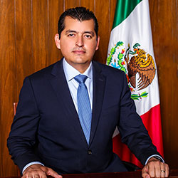
City Mayor: Alejandro Espinoza Ávila
Phone number: +52 (352) 522 2424
Facebook: https://www.facebook.com/alexespinozavila
Website: http://www.lapiedad.gob.mx
Govt. Office Address: Plazuela Cavadas s/n, Colonia Centro, CP 59300, La Piedad, Michoacán
